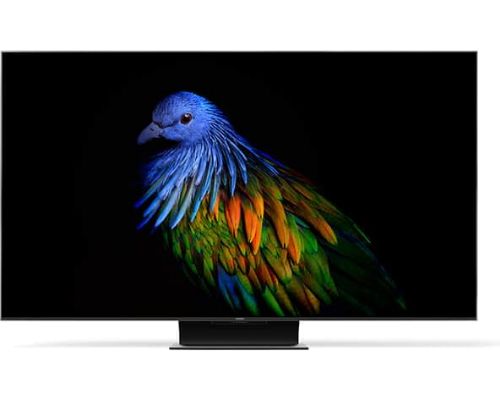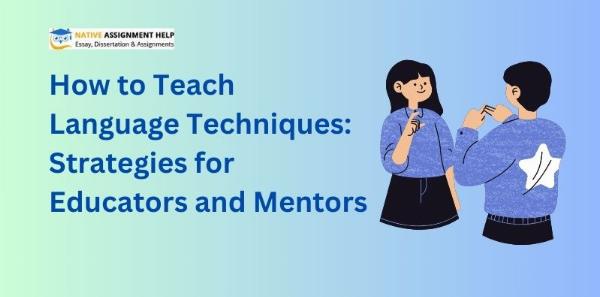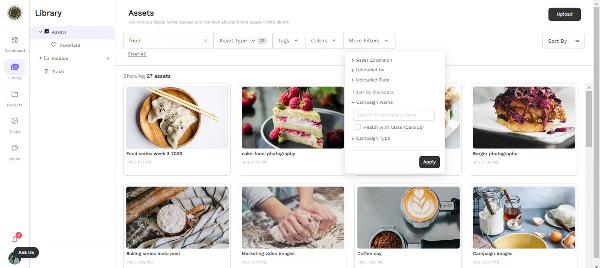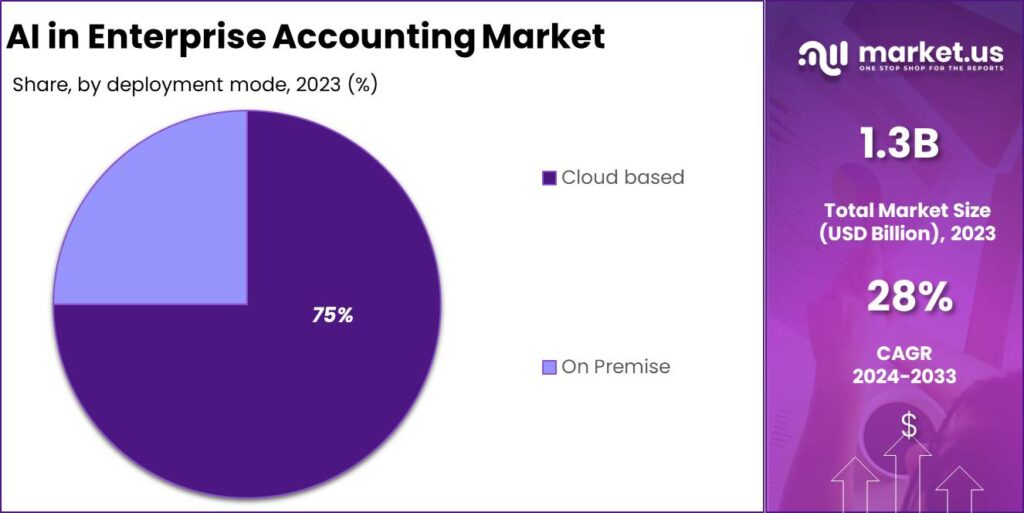Twitter vs. Instagram: Which is Best for Your Brand
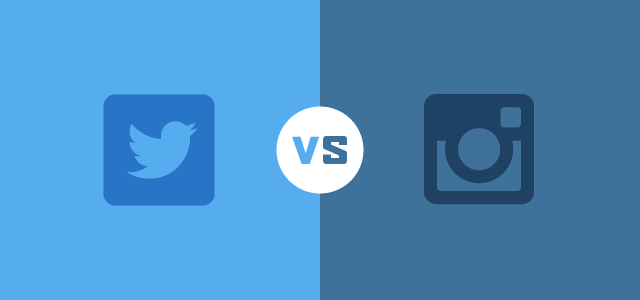
Three to five years ago, Twitter (rebranded as 'X') was a dominant force in the social media marketing world. Marketers flooded to the quick-paced platform to get their content out in front of millions of people. Fast forward to today and Twitter is still very popular, but the network is not as dominant as it used to be. One of the reasons Twitter has seen a slight decline is due to the most engaging social media app currently available, Instagram.
The Twitter vs. Instagram debate has been very interesting to say the least. We've seen some marketers and big brands start to shift away from heavily focusing on Twitter and put more effort toward Instagram. Right now, Instagram is where consumers live. But does that mean you should jump ship and forget about Twitter too?
Not necessarily. We'll break down some of the similarities and differences between the two social networks and help you get a clearer picture of which one is best for your brand.
Twitter vs. Instagram: By the Numbers
As you've seen with our Facebook vs. Twitter and Instagram vs. Facebook articles, statistics can give you a lot of insight into which social networks you should focus on based on popularity. You shouldn't make your decision solely on these numbers, but they'll give you a great place to start.
Twitter Statistics
316 million monthly users80% of active users on mobile77% of users outside the U.S.500 million Tweets sent per dayData provided by Twitter.com
Instagram Statistics
400 million monthly active users40 billion photos shared80 million photos on average per day3.6 billion likes per dayData provided by Instagram.com
Even though Twitter has been around longer, Instagram surpassed Twitter's number of monthly active users. This stat alone is what has made more businesses take notice of the app and start to learn the art of Instagram marketing for brands.
Twitter still wins in the content sharing department with more than 500 million Tweets sent out per day compared to 80 million photos posted per day on Instagram.
Twitter vs. Instagram: Audience
A big piece of the Twitter vs. Instagram debate stems from the fact that they both have identical audiences. When you look at their demographics, you'll notice that the two social networks have similar users in age, income, education level and even location.
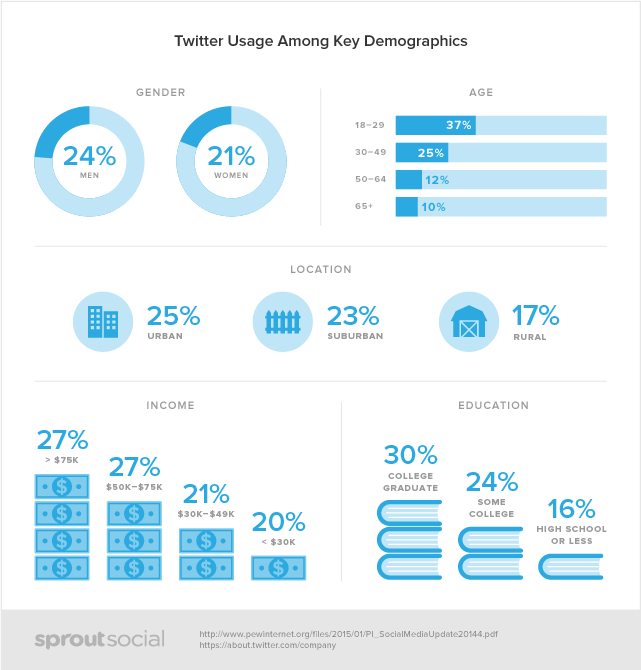
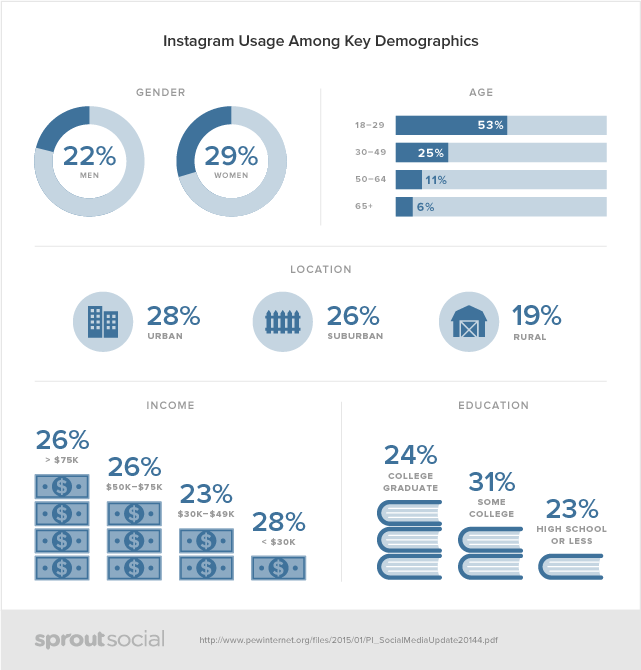
The main age group of users for both networks is 18-29 year olds. After 50+ years old, the number of users start to drop significantly. The other stats show Twitter and Instagram are particularly popular among people in their 20s who are either in college or have recently graduated. This is generally the user base that tends to drive social media growth in general because this group is the most active.
If you're after a younger demographic, you can't really go wrong with either of these platforms. The even divide in gender and location gives marketers significantly more reach than sites which have audiences that are either predominantly female and male, respectively.
Since the overall demographics for both social networks are pretty evenly matched, you'll want to look at the audience of your particular profile to get an idea of who is following you. You can actually do this from within Sprout Social for Twitter. Your dashboard gives you a breakdown of your followers by gender and age.
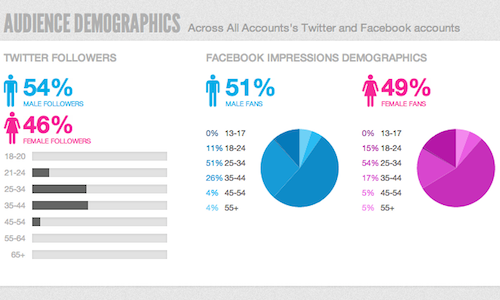 The additional information you have about your followers, the more targeted you can make your content. Your social media posts should be tailored to your followers as much as possible in order to get the best results.
The additional information you have about your followers, the more targeted you can make your content. Your social media posts should be tailored to your followers as much as possible in order to get the best results.Twitter vs. Instagram: Engagement
Instagram has the most engaged users of any social network. Instagram focuses on keeping users glued to the app while they're browsing with little to no distractions. There are no clickable links in the captions or ads to external sites when scrolling through a feed. By excluding unnecessary features, Instagram is able to keep consumers focused on the content that's being posted, which is a huge advantage for your company.
On the flip side, we have Twitter. This social network is very noisy. Your feed is filled with links to blog posts, news articles, videos and other content that takes you away from Twitter's app/site. That makes it much more difficult to get your followers to see your content and engage with it. And because Twitter moves so quickly, the lifespan of your Tweets can drastically vary depending on how many other users your followers are following.
For instance, if your average follower is following 1,000 people, your content is going to be one in a sea of thousands of others. And as other people start Tweeting, your content will be pushed down further, which can make it go completely unseen in some cases.
Here's an example of how much more engagement Instagram posts get than Tweets. The latest McDonald's campaign is #AllDayBreakfast, where the fast food chain will now offer the breakfast menu all day long. The company took to Twitter and Instagram to promote the change. The amount of engagement from the few Instagram posts compared to dozens of Tweets is a clear sign that Instagram users are more engaged.
Instagram posts:
https://instagram.com/p/73pcDkMT6Y/
https://instagram.com/p/74G408MTwT/
Tweets. The first one was pinned at the top of the McDonald's Twitter page:
Get your #AllDayBreakfast best ready for 10/6. pic.twitter.com/PkmFZubobc
— McDonald's (@McDonalds) October 2, 2015



